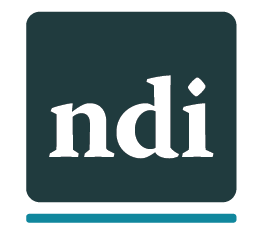Workforce Innovation & Opportunity Act (WIOA)
The Workforce Innovation and Opportunity Act (WIOA) was signed into law in 2014 to help job seekers access the employment, training and support services they need to succeed in the labor market. National Disability Institute offers technical assistance to the public workforce system in all 50 states and U.S. territories through several collaborative projects (detailed below). Our subject matter experts provide state-level and local support to ensure the inclusion of people with disabilities in workforce services toward improved employment outcomes for this underemployed population of ready-to-work talent.
Leveraging Resources for Impact
National Disability Institute’s LEAD Center, Disability Employment Initiative (DEI) and the Workforce Innovation Technical Assistance Center (WINTAC) all work on policy and programmatic implementation related to employment for people with disabilities across public workforce and vocational rehabilitation partner programs under WIOA. These teams’ common interests converge around the need to leverage resources and impact the workforce development system on behalf of job seekers with disabilities.
WIOA: What’s New?
- WIOA shifts focus from labor exchange to career pathways.
- WIOA eliminates a required sequence of services before enrollment in a training program.
- WIOA establishes a strategy through a single State plan.
- WIOA increases shared accountability for community impact.
Leveraging Resources for Impact
National Disability Institute’s LEAD Center, Disability Employment Initiative (DEI) and the Workforce Innovation Technical Assistance Center (WINTAC) all work on policy and programmatic implementation related to employment for people with disabilities across public workforce and vocational rehabilitation partner programs under WIOA. These teams’ common interests converge around the need to leverage resources and impact the workforce development system on behalf of job seekers with disabilities.
WIOA: What’s New?
- WIOA shifts focus from labor exchange to career pathways.
- WIOA eliminates a required sequence of services before enrollment in a training program.
- WIOA establishes a strategy through a single State plan.
- WIOA increases shared accountability for community impact.
WIOA Resources of Interest
The following resources can help you build integrated cross-system collaborations that improve employment and economic outcomes for youth and adult job seekers with disabilities.
This policy brief from the LEAD Center provides a summary of the Department of Labor’s and Department of Education’s Final Rules implementing Title I of the Workforce Innovation and Opportunity Act, from a disability perspective.
Section 188 of WIOA prohibits the exclusion of an individual from participation in, denial of the benefits of, discrimination in, or denial of employment in the administration of or in connection with, any programs and activities funded or otherwise financially assisted in whole or in part under Title I of WIOA because of among other things, race, color, religion, sex, national origin, age, and disability. This policy brief provides a summary of the final rule provisions of Section 188 of WIOA from a disability perspective.
This brief discusses actions that American Job Center (AJC) staff can take to make their services more accessible to autistic people and others with psychosocial, cognitive, intellectual, and developmental disabilities (DD).
American Job Centers (AJCs) are uniquely positioned to extend the promise of financial stability to prospective job seekers and workers with disabilities by serving as a bridge for accessing accurate informational resources and successful strategies to assist in improving one’s financial capability. This paper describes some of the replicable models that AJCs have established to provide financial capability services.
The Vision of WIOA includes a common service process for all customers. Services are to be provided in an integrated service system, in order to assure equal access to services and job opportunities for all customers, as well as increased economy in service provision for the service partner agencies. Without a tangible definition for “Service Integration” in the American Job Center, the WINTAC team set out to meet with State and local leadership in Iowa, Kentucky and Virginia to capture their service processes. Finding Integration Brief
Job seekers with disabilities often need to navigate a maze of multiple systems to access resources that will allow them to get the skills they need and to achieve meaningful employment outcomes. Because of separate functional silos, duplication or fragmentation of services may result and thus not maximize effectiveness for people with disabilities. Learn how funding a full-time Certified Rehabilitation Counselor whose entire caseload consists of shared co-enrolled WIOA title I and WIOA title IV customers can help maximize positive outcomes for both job seekers with disabilities and workforce programs. Georgia VR Partnership
IRTs provide the opportunity for comprehensive, wrap-around services on behalf of an individual with a disability or other challenges to employment by bringing together diverse programs and services that meet the needs of a particular job seeker. Learn how this strategic approach is customer-centered and supports the integrated nature of WIOA. DEI FAQs
Other Employment Resources
Ticket to Work
NDI has multiple trainings to advance the understanding and use of Social Security’s Ticket to Work program.
Career Pathways
NDI connects the support services that enable individuals to secure certifications and obtain employment.
Your Support Matters
Be a catalyst for change by donating today to support National Disability Institute’s innovative projects and research that help build a better financial future for people with disabilities and their families. NDI is a 501(c)3 organization and all donations are tax deductible.
